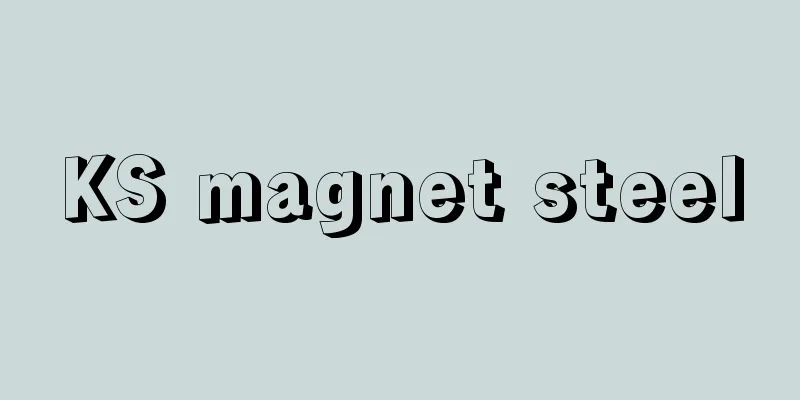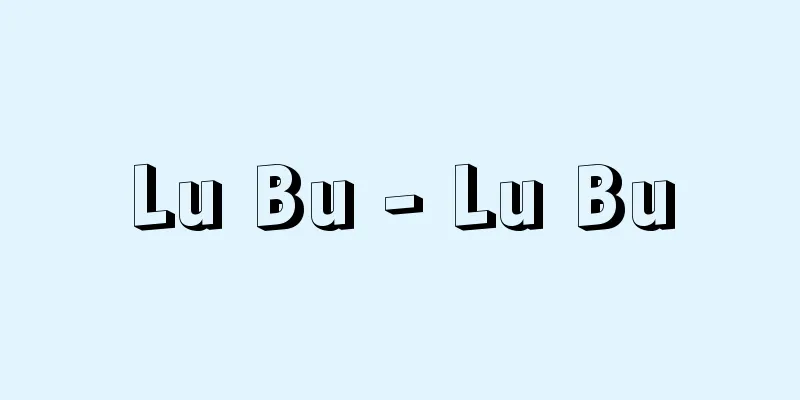KS magnet steel

|
The name of a permanent magnet discovered in 1916 (Taisho 5) by Honda Kotaro and Takagi Hiroshi (Tohoku Imperial University). The names K and S are taken from the initials of Sumitomo Kichizaemon, who donated the research funds. It is a special steel containing 30-35% cobalt, 6-8% tungsten, 1.5% chromium, and 0.8% carbon, and is quenched at about 950°C to form highly hard martensite. Its residual magnetic flux density was about 1.1 tesla, its coercive force was about 20 kiloamperes per meter, and its maximum energy product was 8 kilojoules per cubic meter, making it the strongest permanent magnet in the world at the time. Even in the case of carbon steel, quenching can give it a coercive force of about 4-5 kiloamperes per meter, making it a magnet. KS steel shows a coercive force several times higher than that, which increases its maximum energy product and makes it a powerful permanent magnet material. The increase in coercivity is due to the added elements and heat treatment, but it is believed that the main cause is the increase in magnetostriction of iron due to the addition of cobalt. Since the discovery of KS steel, powerful new permanent magnet materials have been developed one after another. As a result, KS steel is rarely used as a permanent magnet today. However, the discovery of KS steel is highly regarded as the starting point in the history of the development of permanent magnet materials. [Motofumi Homma] [Reference items] | |Source: Shogakukan Encyclopedia Nipponica About Encyclopedia Nipponica Information | Legend |
|
1916年(大正5)本多光太郎(こうたろう)、高木弘(東北帝国大学)によって発見された永久磁石の名称。K、Sの名は、この研究費を寄贈した住友吉左衛門(きちざえもん)の頭(かしら)文字をとったものである。コバルト30~35%、タングステン6~8%、クロム1.5%、炭素0.8%を含む特殊鋼で、約950℃から焼入れして、高い硬度をもつマルテンサイトとする。その残留磁束密度は約1.1テスラ、保磁力は約20キロアンペア毎メートル、最大エネルギー積は単位立方メートル当り8キロジュールであって、当時世界最強の永久磁石であった。炭素鋼の場合でも、焼入れによって4~5キロアンペア毎メートル程度の保磁力が得られ、磁石となる。KS鋼はそれに比較して数倍も高い保磁力を示し、これが最大エネルギー積を高め、強力な永久磁石材料とした。保磁力の増加は、添加された元素と熱処理によるものであるが、とくにコバルトの添加による鉄の磁気ひずみの増加がその主因であると考えられている。KS鋼の発見以来、これまで次々と強力な新しい永久磁石材料が開発されてきた。そのため現在ではKS鋼は永久磁石としてほとんど使用されていない。しかし、KS鋼の発見は永久磁石材料の開発の歴史上の原点として、その成果は高く評価されている。 [本間基文] [参照項目] | |出典 小学館 日本大百科全書(ニッポニカ)日本大百科全書(ニッポニカ)について 情報 | 凡例 |
<<: Wool fabric - woolen fabric
Recommend
Clock - Tokei (English spelling) watch
A clock is a device that indicates time or measur...
Moisture-proof
〘 noun 〙 To prevent moisture. ※How to Choose and U...
Asian rice - Ajiaine
...It is believed that the cultivated species evo...
Battle of Aljubarrota - Battle of Aljubarrota
…In April 1485, at the Cortes held in Coimbra, Jo...
active volcano
...Therefore, volcanoes from ancient geological t...
ASDF - ASDF
…Externally, it is called the Air Self Defense Fo...
Synovial membrane
The synovial layer is a layer of connective tissue...
Allege motor - Allege motor
...Liquid monopropellant rockets are often used, ...
Rostra (English spelling)
A large platform in the public square of ancient R...
Ie Nao, Lord of Iizasayama Castle
…There are various theories about his birth year....
Junk - junk (English spelling)
A general term for sailing ships that have been w...
Iruka - Dolphin
The title of a Kōwaka dance piece. Also known as K...
Airabata - Airabata
…Eight males and females were born from the egg t...
Osaka Weaving Fabric
…The following year, the company opened with 10,5...
Photo Chemical Laboratory
...Toho's founding coincided with the develop...









